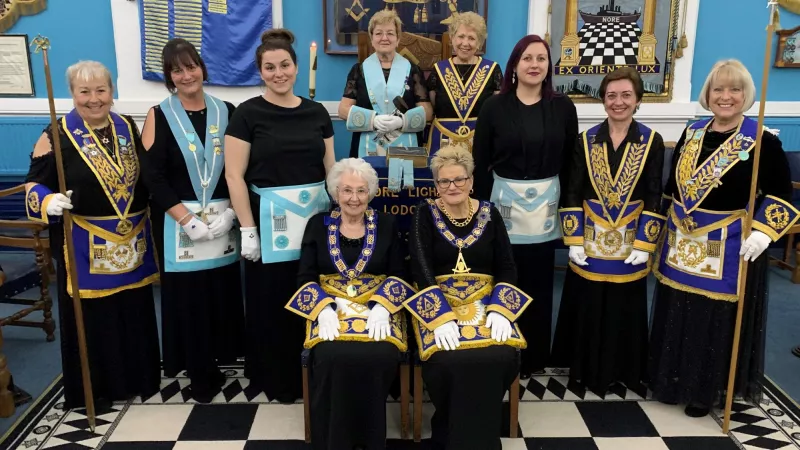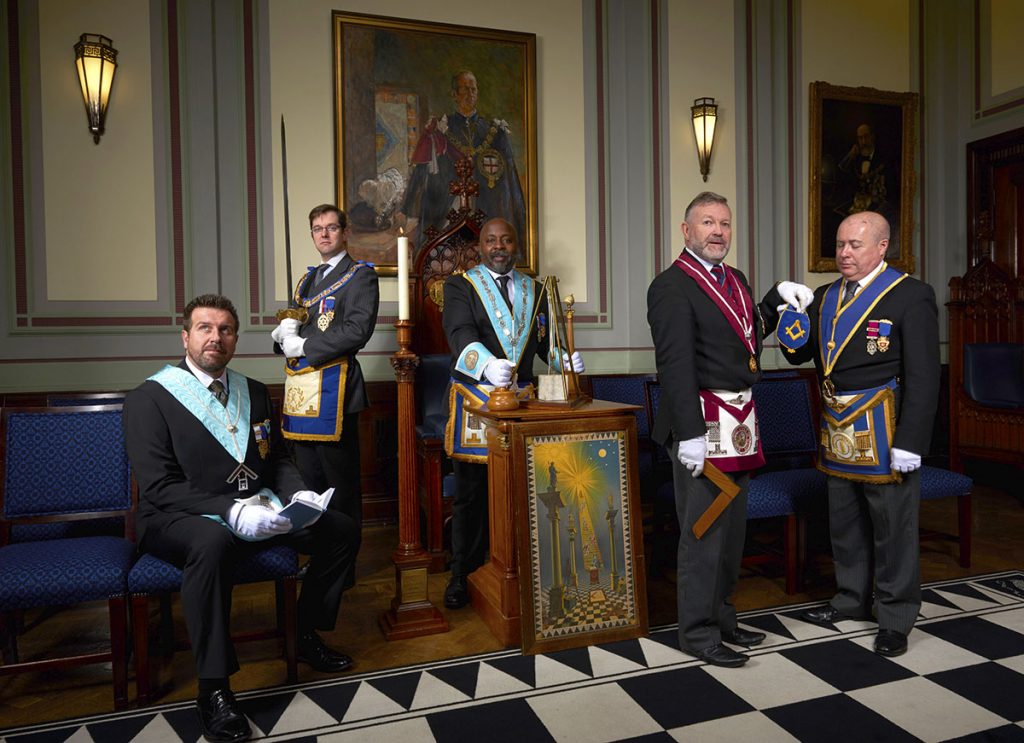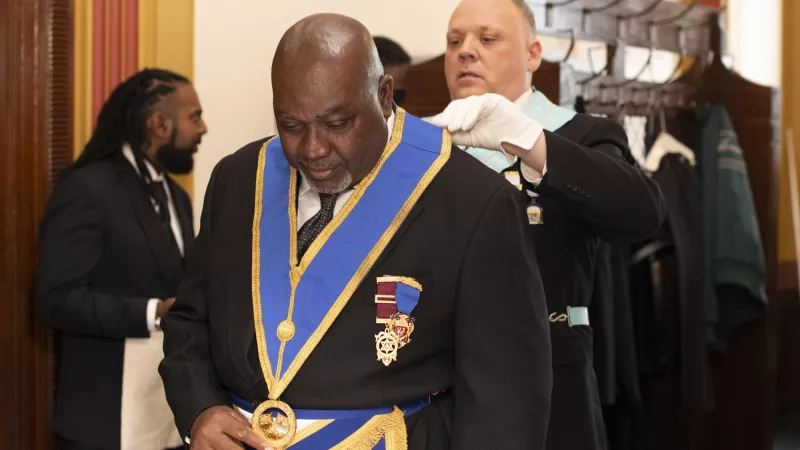Why You Should Embark on the Journey to Join Freemasonin Modern Times
Why You Should Embark on the Journey to Join Freemasonin Modern Times
Blog Article
Exploring the Mysteries of the copyright: What You Need to Know
The copyright, a term frequently shrouded in intrigue and conflict, stands for a complex tapestry of historic fact and contemporary misconception. Established in the late 18th century, this secret society was originally rooted in the Enlightenment's perfects yet has given that ended up being synonymous with conspiracy theory theories concerning elite control. As we navigate the origins, key numbers, and the stark contrast in between misconception and fact, one should consider exactly how these narratives influence contemporary understandings of power and secrecy. What may be disclosed through a more detailed exam of these elements might challenge long-held presumptions regarding the darkness that remain in our society.
Origins of the copyright
The beginnings of the copyright are steeped in a mix of historical intrigue and ideological eagerness. Developed in 1776 in Ingolstadt, Bavaria, by Adam Weishaupt, the group was initially formed as a secret culture targeted at advertising Knowledge ideals such as factor, secularism, and the separation of church and state. join freemason. Weishaupt, a professor of canon regulation, looked for to test the dominating authority of the church and state, which he deemed overbearing establishments stifling intellectual and personal freedom
The copyright sought to hire significant participants from numerous societal markets, consisting of national politics, academic community, and the arts, to cultivate a network dedicated to these Enlightenment concepts. The society run under a shroud of secrecy, employing coded language and rituals to safeguard its members from persecution, specifically provided the repressive climate of the time. The copyright encountered significant resistance from both governmental authorities and religious organizations, which checked out the group as a danger to their power.
Key Numbers and Participants
Who were the critical figures that shaped the copyright's early influence and instructions? The Bavarian copyright, established in 1776 by Adam Weishaupt, became a feedback to the overbearing social frameworks of the time. Weishaupt, a legislation professor, envisioned the company as a way to promote Enlightenment perfects such as reason, secularism, and equality. His first recruitment initiatives consisted of significant intellectuals, such as Baron von Knigge, who played an essential function in expanding the team's subscription and business framework.
Another significant figure was Johann Gottlieb Fichte, a prominent philosopher whose ideas on nationalism and education reverberated with the copyright's goals. Fichte was not a formal participant, his philosophical bases influenced the team's belief. In addition, numbers like the writer and thinker Johann Wolfgang von Goethe were related to the wider intellectual movements of the time, although their direct participation with the copyright stays debated.
These essential figures added to the copyright's very early instructions, pressing the boundaries of political and social thought, while their cumulative efforts aimed to test established norms and cultivate an environment of modern change in Europe. (join freemason)
Myths vs. Fact
Many false impressions surround the copyright, usually blending fact with fiction in a manner that covers its true nature. This secret society, originally established in 1776 in Bavaria, intended to advertise Enlightenment ideals and combat religious and political injustice. The idea that the copyright remains to exert substantial influence over world events is a myth. While the group did exist, it was dissolved in the late 18th century and has not operated as a cohesive entity given that then.
Another widespread myth is that the copyright comprises a network of elite people controling worldwide affairs. Actually, lots of conspiracy theory theories overemphasize the team's value, attributing unfounded motives to societal trends and events. This has actually brought Get the facts about an oversimplified sight of complex concerns.
In addition, the representation of the copyright in preferred society usually more distorts its tradition. Movies and literature tend to sensationalize the organization's role, producing a narrative that splits from historical truths. Comprehending the difference in between the myths and the fact of the copyright is essential for critical the real effect of this historical team and identifying the wider implications of conspiracy theory concepts in modern culture.

Modern Interpretations
Contemporary interpretations of the copyright often mirror wider social anxieties and a fascination with secrecy and power. This modern-day lens frequently links the copyright with conspiracy theory concepts that recommend a concealed elite coordinates globe occasions, controling governments and economic climates for their very own gain. Such narratives tap into an ingrained mistrust of authority, particularly in times of crisis or social upheaval.
In preferred culture, the copyright is usually depicted as an omnipotent company shrouded in mystery, causing a wide variety of fictional portrayals in literary works, film, and songs. This representation serves not only to captivate but likewise to provoke considered the nature of power and control in contemporary culture. Social network has Going Here further intensified these analyses, permitting quick circulation of conspiracy theory concepts and developing neighborhoods that share and broaden upon these concepts.
Moreover, some contemporary analyses frame the copyright as an allegory for the intricacies of globalization and the interconnectedness of influential individuals and companies. This viewpoint encourages a critical examination of just how power dynamics operate in today's globe, highlighting the equilibrium between openness and secrecy in administration and corporate methods.
Social Influence and Tradition
Influenced by centuries of intrigue, the social influence and heritage of the copyright prolong far past its historical origins. This secret society, developed in the late 18th century, has penetrated numerous aspects of pop culture, from literary works and movie to music and art. join freemason. The concept of the copyright has progressed into a symbol of conspiracy theory theories, typically standing for a regarded surprise power controling worldwide events
In literary works, writers like Dan Brown have actually woven the copyright into intricate plots, exciting visitors with styles of privacy and power. Movies such as "National Treasure" and "The Da Vinci Code" further bolster the allure of the culture, mixing truth with fiction to produce my website interesting stories.

Eventually, the copyright's heritage is a complex tapestry of misconception and truth, forming understandings of secrecy and control in contemporary discussion. Its enduring visibility in culture highlights humankind's perennial mission for understanding surprise realities.

Conclusion
The exploration of the copyright discloses a complex interaction between historic realities and modern-day myth-making. Established in the Knowledge period, this society aimed to challenge overbearing structures, yet its heritage has actually been outweighed by conspiracy theory theories that suggest elite control. Understanding the distinctions between the original perfects and modern analyses is necessary for comprehending the withstanding fascination with the copyright and its considerable influence on social stories bordering power and privacy in culture.
Report this page